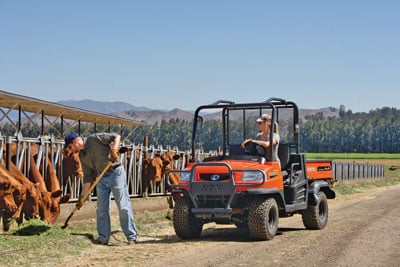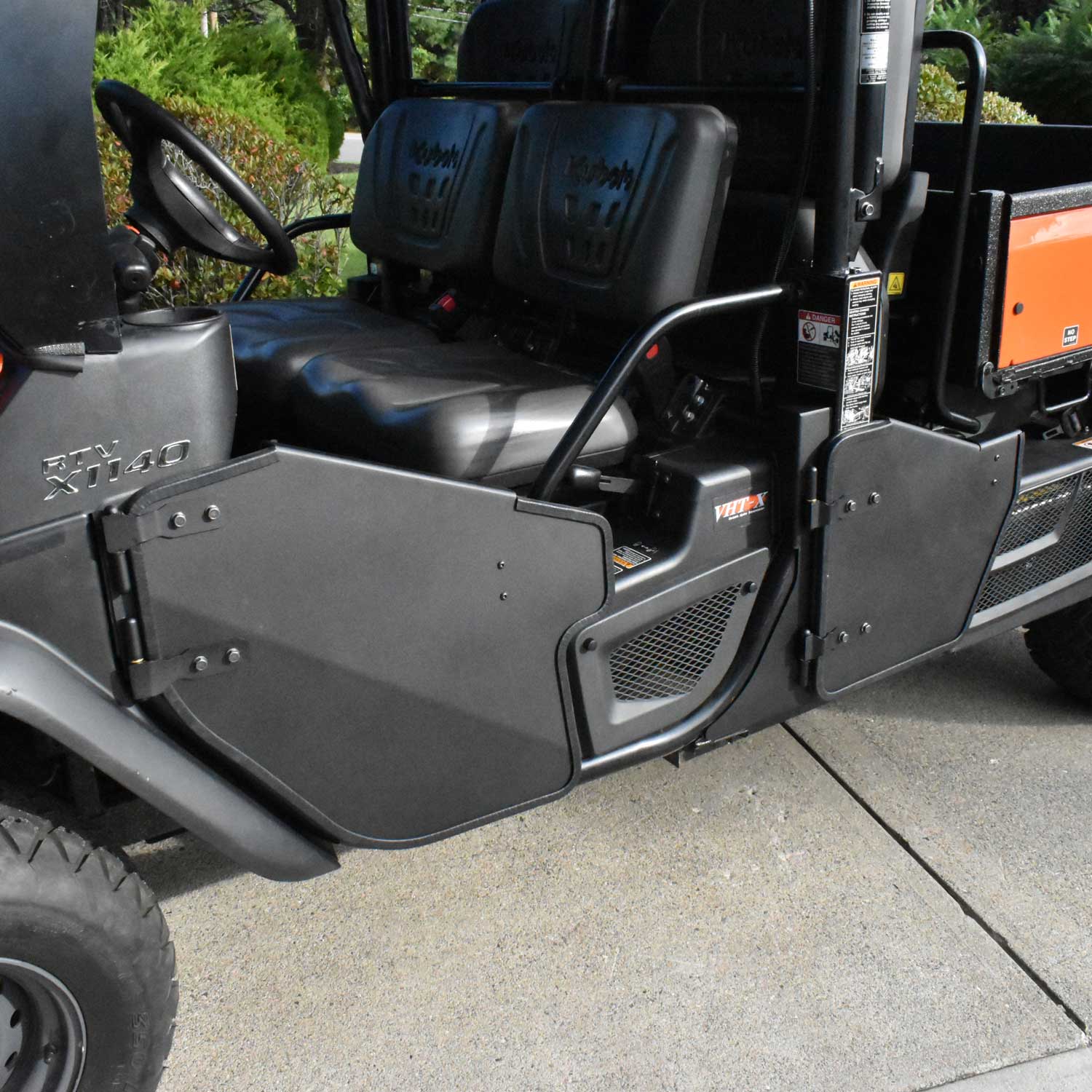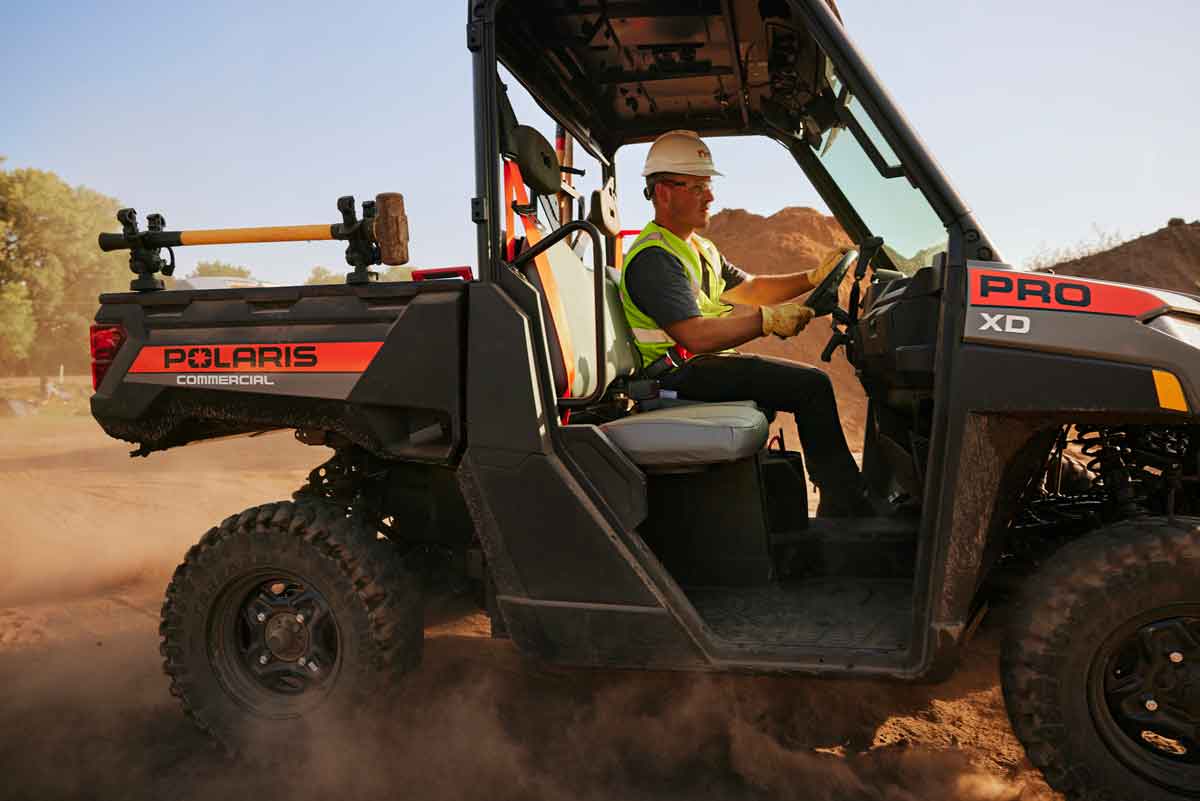Operational and maintenance tips for utility vehicle safety

Be familiar with your terrain and work area. Walk the area first to identify any debris or obstacles that could hinder your ability to drive safely.
Utility vehicles have become standard equipment for construction jobsites — from moving personnel to carrying materials, tools and debris around the site. In many cases, utility vehicles are among the first pieces of equipment needed on the job and they are among the last pieces of equipment to be called off the site. Safe operation and simple maintenance will keep these valuable worksite tools ready to work day after day under all kinds of conditions. To start, it is imperative to closely follow the manufacturer’s recommended service schedule to keep on top of all maintenance needs. If the vehicle has multiple users, be sure the operator’s manuals, safety videos and other tools are shared before use. Performing daily maintenance checks on the utility vehicles will keep them in top shape for your job.
Often on construction sites, utility vehicles are used to carry materials and debris from one location to another, and the process of loading and unloading the vehicle is an instance where proper safety measures are imperative. Each vehicle has a payload capacity, which should be referenced whenever material transport takes place. Operators should be sure to take into consideration the weight of passengers when calculating the total weight the vehicle can carry. Always subtract passenger weight from the payload capacity to get the true weight of materials that can be added. Not doing so can often lead to overloading the vehicle, causing stress on the frame, axles and suspension and putting passengers in danger.
When it comes to maintaining safety, Kubota strongly recommends customers be sure that older equipment have a seatbelt and rollover protection structure (ROPS) to provide a protective zone around the operator — greatly reducing the chances of serious injury in the case of a rollover accident. To add even more protection, consider a model with a fully enclosed cab as these models keep arms and legs within the cab while traversing uneven terrain or during a tip or roll. Adding accessories that are designed to ensure a safer working environment is also a great way to help keep operators, passengers and bystanders safe on the job. Taillights, reverse alarms, brake lights and strobe lights are all good options to consider. Below is a quick checklist that can be used to increase utility vehicle safety on any jobsite:
■ Get to know the utility vehicle, its implements and how they work. Please read and understand the operator’s manual before operating the equipment and heed all warning labels posted on the vehicle itself. Keep the equipment in good condition.
■ Always use ROPS and seatbelts whenever and wherever applicable. For your safety and protection, a ROPS is a standard feature on all Kubota RTV models and meets with SAE J2194 and OSHA 1928 standards.
■ Be familiar with your terrain and work area. Walk the area first to identify any debris or obstacles that could hinder your ability to drive safely. Use special caution on slopes and slow down for all turns.
■ Never start an engine in a closed shed or other enclosed space. Exhaust gas contains carbon monoxide, which is colorless, odorless and deadly.
■ Make sure all site operators are aware that the utility vehicles are for off-road jobsite use only and should not be operated on adjacent highways, streets or other paved roads.
■ The use of cell phones while operating any heavy equipment should be discouraged on the construction site, and operators should be encouraged to drive at safe speeds.
■ Be certain to allow only the recommended number of riders to match the seatbelts in place for the specific utility vehicle.
■ Inspect all tires, wheels and attachments to make sure they are in good working condition.





Comments are closed here.